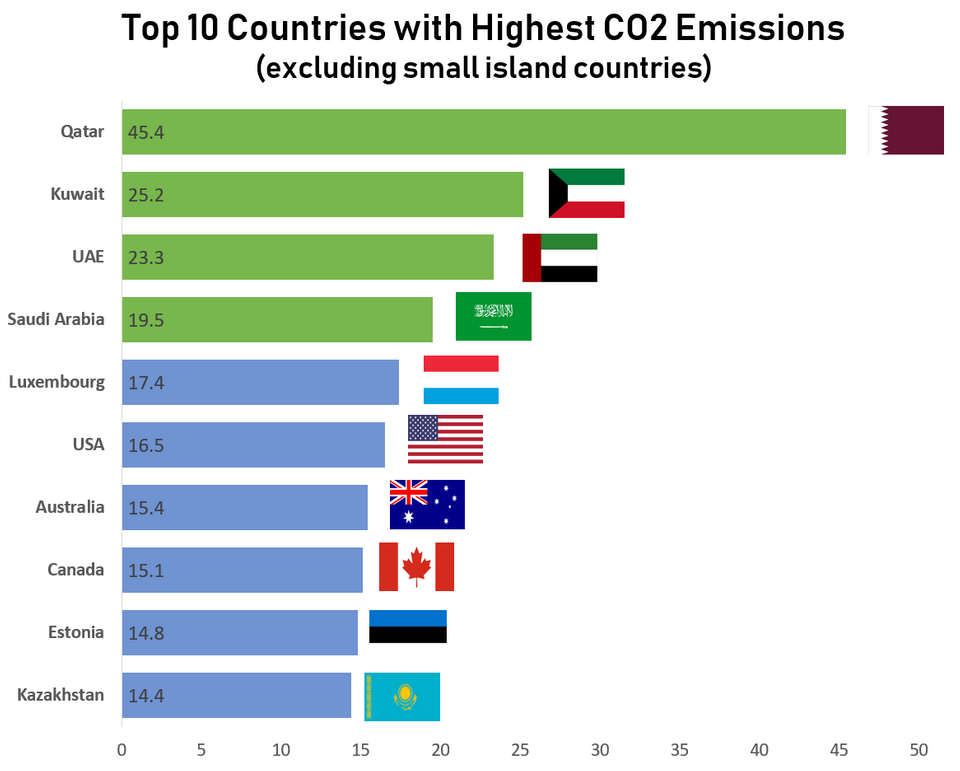While the total emissions of a country like China or the United States may be high due to their large populations, emissions per capita provide insights into the average carbon footprint of individuals within a nation.
Gulf nations, particularly those in the Middle East, often rank high in CO2 emissions per capita. Countries like Qatar, Kuwait, and the United Arab Emirates have substantial emissions driven by their oil and gas industries, high energy consumption, and energy-intensive lifestyles.
Luxembourg, a small European country with a high standard of living and a well-developed industrial sector, often ranks among the top nations in per capita emissions. The country's small population and high levels of energy consumption contribute to this status.
Australia is another country after the United States with notable emissions per capita, primarily due to its reliance on coal for energy production and its expansive, energy-intensive industries. Despite efforts to shift towards renewable energy, the country's historical dependence on fossil fuels continues to contribute to high per capita emissions.
Canada, with its vast landmass and resource-intensive industries such as oil sands extraction, is also among the countries with higher CO2 emissions per capita. The energy sector, including the exploitation of unconventional oil reserves, has been a significant factor in Canada's carbon footprint.
To learn more about the CO2 emissions have a look at the following books:

This post may contain affiliate links. As an Amazon Associate, I earn from qualifying purchases.